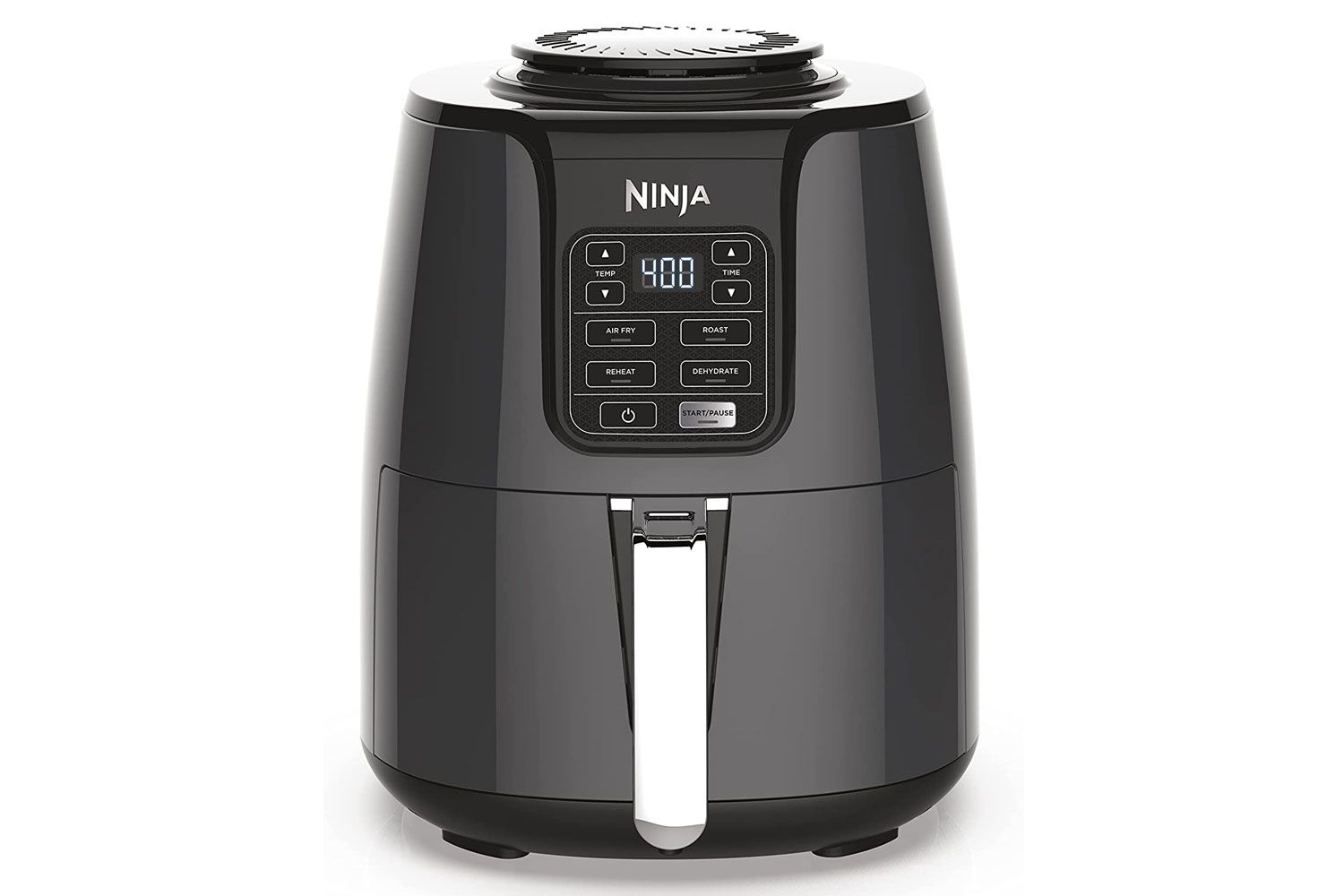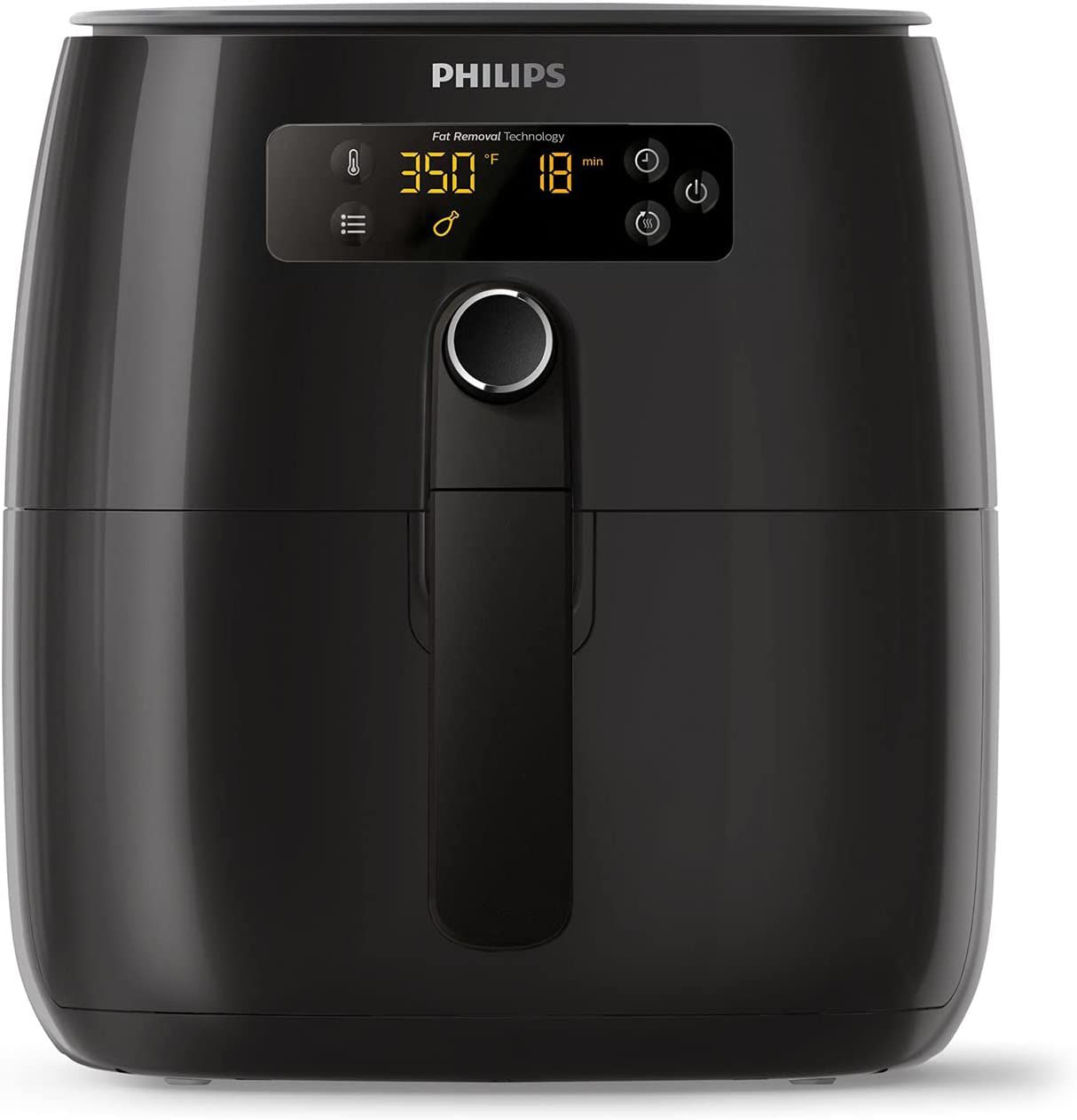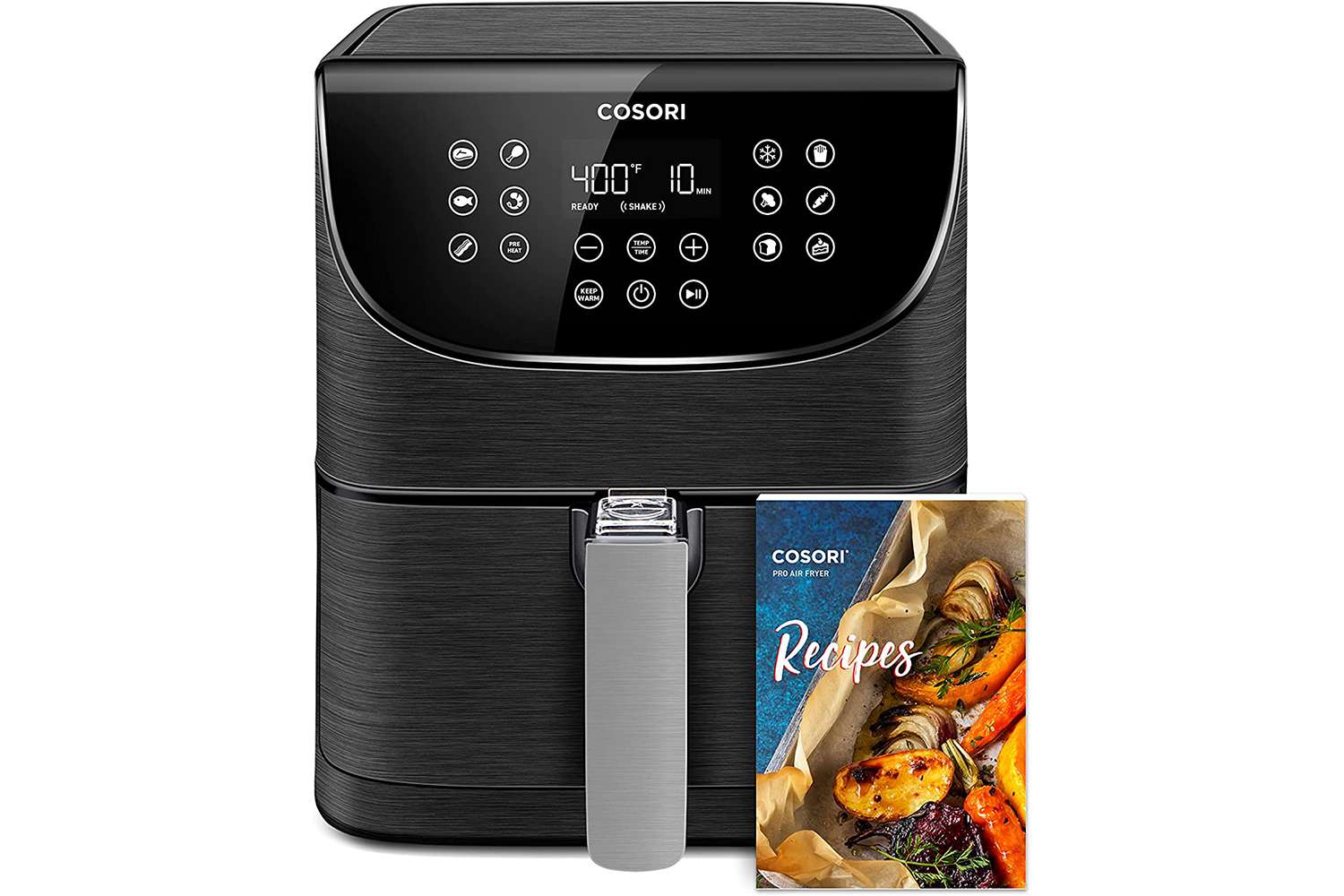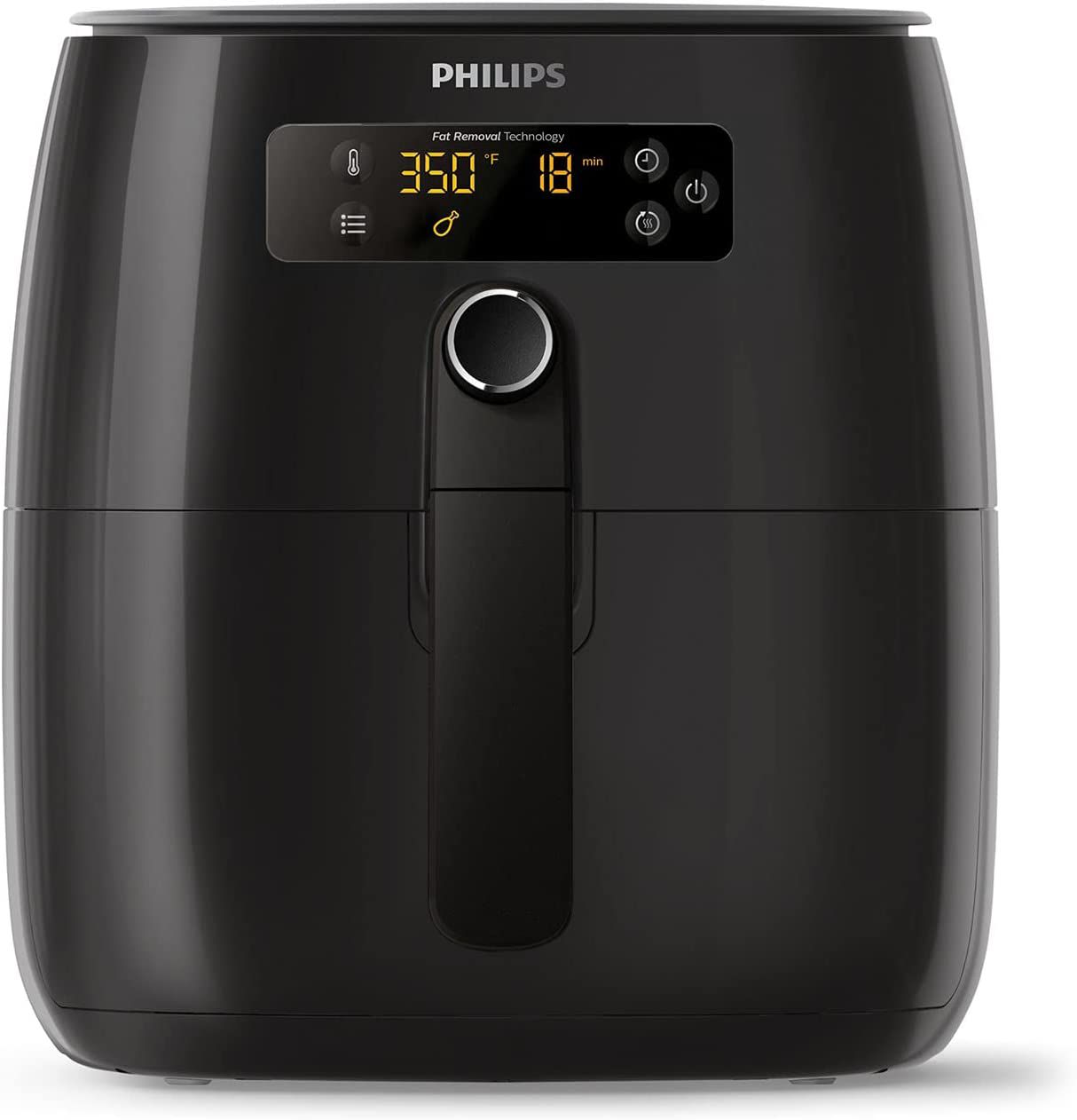Air fryers have taken the culinary world by storm, revolutionizing the way we cook our favorite foods. But how do air fryers work? These incredible devices harness the power of hot air circulation to create that coveted crispiness we all crave, without the need for excessive amounts of oil. By evenly distributing heat at high temperatures, air fryers cook food quickly and efficiently, producing golden and crispy results every time. Whether you’re a health-conscious individual looking to cut down on oil, or simply someone who loves indulging in delicious, guilt-free meals, understanding the inner workings of air fryers is the key to unlocking a world of culinary possibilities. So, get ready to discover the secrets behind this incredible cooking technology and embark on a crispy and flavorful journey like no other.
The Science behind Air Fryers: Understanding the Technology
Hot Air Circulation: Mimicking Deep-Frying without the Oil
When you think of air fryers, think of them as tiny convection ovens. They work by circulating superheated air around your food, creating a crispy and golden exterior. This method is similar to deep-frying, but without the need for gallons of oil. Air fryers use a heating element to produce hot air, which is then propelled by a powerful fan. The hot air is evenly distributed throughout the cooking chamber, ensuring that every nook and cranny of your food gets cooked to perfection.
The Maillard Reaction: Unlocking Flavor and Texture
The real magic of air fryers lies in their ability to achieve that delightful Maillard reaction. This chemical reaction occurs when high heat interacts with the proteins and sugars in food, resulting in that delicious browning and the development of complex flavors. Just like traditional frying, air frying creates a crispy, caramelized crust that adds depth and texture to your dishes. So, whether you’re craving crispy fries or a mouthwatering chicken breast, air fryers can help you achieve that perfect browning without the excessive oil.
The Role of Cooking Temperature and Time
To cook your food to perfection, it’s essential to understand the role of cooking temperature and time in air fryers. Air fryers typically reach temperatures ranging from 300 to 400 degrees Fahrenheit (150 to 200 degrees Celsius). The high cooking temperature, combined with the rapid hot air circulation, ensures speedy and even cooking. Additionally, adjusting the cooking time allows you to achieve different levels of crispiness and doneness. So, whether you prefer your fries extra crispy or your chicken juicy and tender, you can easily customize the cooking time to suit your preferences.
Exploring the Key Components of an Air Fryer
Heating Element: Generating the Heat
The heating element is the heart of an air fryer. It’s responsible for generating the intense heat required for air frying. Typically located at the top of the appliance, the heating element rapidly heats up the air inside the fryer. This hot air is then circulated by the fan, ensuring uniform cooking and browning of your food.
Fan: Propelling the Hot Air
The fan plays a crucial role in air fryers by circulating the hot air generated by the heating element. This continuous circulation ensures that the hot air envelops your food from all angles, resulting in evenly cooked and crispy dishes. The powerful fan also helps in speeding up the cooking process, making air frying a convenient and time-saving cooking method.
Cooking Chamber: Creating the Perfect Cooking Environment
The cooking chamber, or basket, is where the magic happens. It’s the space where your food gets cooked to perfection. Typically made of non-stick material, the cooking chamber allows the hot air to flow through and around your food, ensuring even cooking and browning. The basket is designed with perforations to facilitate air circulation, allowing excess moisture to escape and preventing sogginess.
[amazon bestseller=”Air Fryer” items=”10″]
Step-by-Step Guide: How to Use an Air Fryer for Delicious Results
Preheating: Get the Fryer Ready
Before you start cooking, it’s crucial to preheat your air fryer. Simply set the desired temperature and let the appliance heat up for a few minutes. Preheating ensures that the hot air is ready to work its magic on your food as soon as you place it inside the fryer, resulting in better browning and faster cooking.
Choosing the Right Cooking Settings
Most air fryers come with preset cooking settings for popular dishes like fries, chicken, and fish. However, don’t be afraid to venture beyond these presets and experiment. Adjusting the cooking temperature and time according to your recipe and personal taste preferences allows you to achieve the desired level of crispiness and doneness. Keep in mind that thicker cuts of meat may require slightly longer cooking times.
Proper Food Placement: Maximizing Air Circulation
To ensure even cooking, it’s essential to arrange your food in a single layer, allowing the hot air to flow freely around each piece. Overcrowding the basket can hinder air circulation, leading to uneven cooking results. If you’re cooking larger quantities, consider cooking in batches to maintain optimal air circulation and achieve that perfect crispiness.
Occasional Shaking or Flipping: Promoting Even Cooking
Some recipes benefit from shaking or flipping halfway through the cooking process. This technique ensures that all sides of your food receive equal exposure to the hot air, resulting in even browning. When the cooking time is halfway complete, use tongs or a spatula to gently shake or flip your food. This simple step can make a significant difference in achieving crispy and evenly cooked dishes.
The Benefits of Air Frying: Healthier Cooking with Less Oil
Reduced Oil Consumption: Healthier Eating Made Easy
One of the main advantages of air frying is that it significantly reduces the amount of oil needed for cooking. Traditional deep-frying requires submerging food in oil, which can lead to high calorie and fat content. Air fryers, on the other hand, require only a fraction of the oil, providing a healthier alternative. With air frying, you can enjoy your favorite crispy treats guilt-free, knowing that you’re cutting down on excess oil without compromising on taste and texture.
Healthier Nutrient Retention
Air frying is known for its ability to retain more nutrients compared to traditional frying methods. The reduced cooking time and minimal exposure to oil help preserve the nutritional value of your food. Veggies, for example, retain more vitamins and minerals when air fried, making it a great way to incorporate healthier options into your meals. So, if you’re looking to boost your nutrient intake while indulging in crispy delights, air frying is the way to go.
Convenience and Easy Cleanup

Air fryers offer a convenient and hassle-free cooking experience. They require little to no preheating time, allowing you to whip up a quick and delicious meal in minutes. Moreover, cleaning up is a breeze. Most air fryer baskets and trays are dishwasher-safe or can be easily hand-washed, saving you the trouble of scrubbing greasy pans and utensils. So, whether you’re a busy parent or someone who values efficiency in the kitchen, air frying can make your cooking routine much more enjoyable.
So now you know the science behind air fryers, the key components that make them work, how to use them effectively, and the numerous benefits they offer. It’s time to unleash your culinary creativity and explore the world of air frying! Dig into those crispy fries, savor juicy chicken, and indulge in guilt-free culinary delights.
The Science behind Air Fryers: Understanding the Technology
Hot Air Circulation: Cooking without Oil
Air fryers have gained popularity due to their ability to fry delicious foods with minimal oil. But how do they achieve crispy results without dunking the food in a pool of hot oil? The secret lies in the technology behind air fryers.
Air fryers operate using convection heating, which is a fancy way of saying that they circulate hot air around the food. Just like a convection oven, air fryers use a heating element to produce the heat, which is then distributed by a powerful fan. This continuous circulation of hot air ensures that the food is evenly cooked and crispy on all sides.

When you place food in the air fryer basket, the hot air circulates around it at a high speed, quickly transferring heat to the surface. This results in a process called the Maillard reaction, where the amino acids and sugars in the food react to create that golden-brown, crispy exterior we all love.
Rapid Air Technology: Faster Cooking Times
Another key component of air fryers is their rapid air technology. This innovation allows air fryers to cook food faster than traditional ovens or deep frying methods.
By circulating hot air around the food, air fryers create a convection effect that speeds up the cooking process. The constant movement of the hot air ensures that heat is evenly distributed throughout the cooking chamber, resulting in shorter cooking times.
Think of it like standing under a powerful fan on a hot day. The moving air makes you feel cooler faster compared to still air. Similarly, the rapid air movement inside the air fryer helps to cook the food faster and more efficiently.
Exploring the Key Components of an Air Fryer

Heating Element: Generating the Heat
The heating element is the heart of an air fryer. It’s responsible for generating the heat that cooks the food. Typically located at the top of the appliance, the heating element produces intense heat that is then distributed by the fan.
Fan: Circulating Hot Air
The fan in an air fryer plays a crucial role in the cooking process. It circulates the hot air generated by the heating element, ensuring that the temperature is consistent throughout the cooking chamber. The powerful fan also helps in achieving the crispy texture we desire by constantly moving the hot air around the food.
Cooking Basket: Holding the Food
The cooking basket is where you place your food in an air fryer. It is designed with perforations or mesh to allow the hot air to circulate around the food, promoting even cooking. The basket is typically removable, making it easy to transfer the cooked food onto a plate.
Step-by-Step Guide: How to Use an Air Fryer for Delicious Results
Preheating: Starting with a Hot Oven
Before diving into the cooking process, it’s important to preheat your air fryer. Preheating ensures that the cooking chamber and the heating element reach the desired temperature, allowing for optimal cooking.

To preheat your air fryer, simply set the temperature to the recommended level and let it run for a few minutes. This step is essential to achieve consistent and evenly cooked results.
Addition of Food: Preparing for Delightful Crisps
Once your air fryer is preheated, it’s time to add your food. Whether you’re cooking chicken wings, french fries, or even baking a cake, make sure not to overcrowd the cooking basket. Leaving some space between the food items allows the hot air to circulate freely, resulting in better and crispier outcomes.
Cooking Time and Temperature: Finding the Perfect Balance
Each recipe and type of food will have specific cooking times and temperatures. It’s important to follow these guidelines to achieve the best results. The recommended cooking time and temperature can usually be found in the user manual or recipe book that comes with your air fryer.
Keep in mind that the cooking time may vary depending on the quantity and thickness of the food you’re cooking. It’s always a good idea to check on the food periodically and adjust the cooking time if needed.
The Benefits of Air Frying: Healthier Cooking with Less Oil
Reduced Oil Consumption: A Healthier Alternative
One of the primary advantages of air frying is its ability to cook food with significantly less oil than traditional deep frying methods. Air fryers require only a small amount of oil to achieve the desired texture and taste, making it a healthier alternative.
By using hot air circulation, air fryers can create the crispy and golden-brown texture we love without the need for excessive oil. This reduction in oil consumption can help lower the amount of unhealthy fats in our diet, potentially benefiting our overall health.
Less Mess and Easy Cleanup: Convenience in the Kitchen
Deep frying can be messy, with oil splattering all over the kitchen. Air frying, on the other hand, is a much cleaner and hassle-free cooking method. Since you’re using minimal oil and there’s no submersion involved, there’s less chance of oil splatters and spills.
Cleaning an air fryer is also relatively simple. Most air fryers have dishwasher-safe parts, including the cooking basket. This makes cleanup a breeze, allowing you to spend more time enjoying your deliciously air-fried meals and less time scrubbing pots and pans.
Overall, air frying offers a convenient and healthier way to enjoy your favorite fried foods, all while reducing the mess and clean-up time in the kitchen.
Conclusion
In conclusion, air fryers have revolutionized the way we cook, providing a healthier alternative to traditional deep frying methods. By understanding the technology and components behind these innovative appliances, we can unlock their full potential and achieve delicious, crispy results. From learning how to use an air fryer effectively to uncovering the secrets of golden air-fried foods, the possibilities are endless. By mastering the cooking techniques and following proper cleaning and maintenance, we can ensure our air fryer stays in top shape for years to come. So, if you’re wondering, “How do air fryers work?” the answer lies in their ability to circulate hot air and produce crispy, mouthwatering dishes. With the benefits of healthier cooking and the freedom to unleash your creativity in the kitchen, investing in the perfect air fryer becomes an essential decision. So go ahead, embark on this culinary adventure and experience the wonders of air frying firsthand.
Frequently Asked Questions
1. How do air fryers work?
Air fryers work by circulating hot air rapidly around food, creating a crispy outer layer similar to deep-frying, but with little to no oil. They use a heating element combined with a powerful fan to blow the hot air on the food, cooking it evenly and quickly.
2. Are air fryers really healthier than deep fryers?
Yes, air fryers can be a healthier alternative to deep fryers. Since they use little or no oil, they significantly reduce the amount of fat and calories in your favorite fried foods. However, it’s important to note that the nutritional value of the food you’re cooking also plays a role in overall healthiness.
3. Can I use air fryers for cooking multiple types of food?
Absolutely! Air fryers are versatile and can cook a wide variety of foods, including meat, vegetables, and even baked goods. Some air fryers may come with additional accessories that allow for more options, such as grilling or roasting.
4. Do air fryers emit any odor or smoke while cooking?
One of the great advantages of air fryers is that they produce minimal to no smoke compared to traditional frying methods. However, certain foods, especially fatty ones, can release a bit of odor during the cooking process. To prevent any lingering smells, it’s recommended to keep your kitchen well-ventilated.
5. Are air fryers easy to clean?
Yes, air fryers are generally easy to clean. Most models have removable parts that are dishwasher-safe, making the cleaning process convenient. It’s important to follow the manufacturer’s instructions for cleaning, but in general, wiping the interior with a damp cloth and washing detachable parts should suffice.










